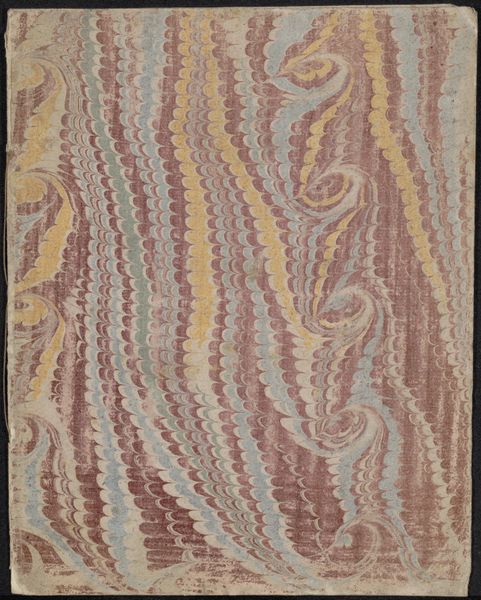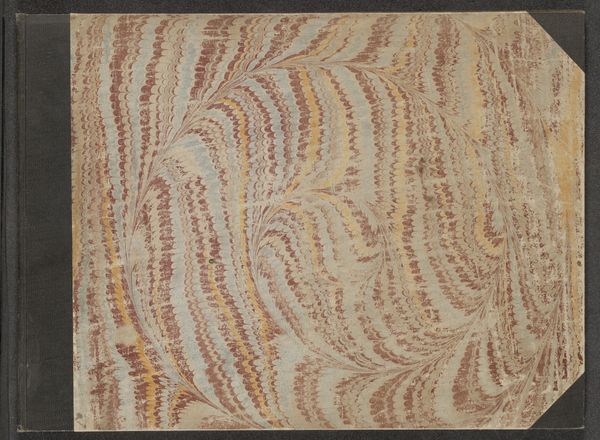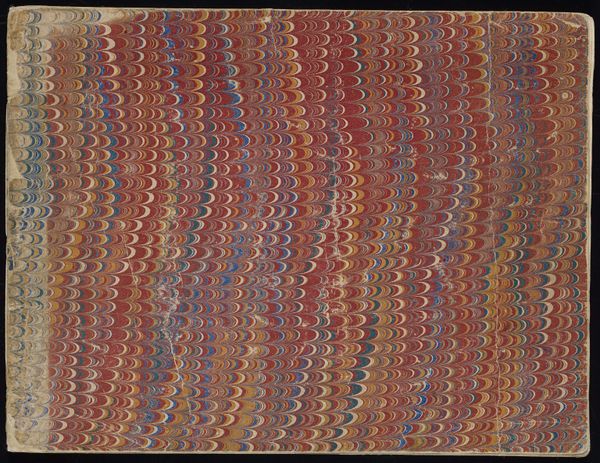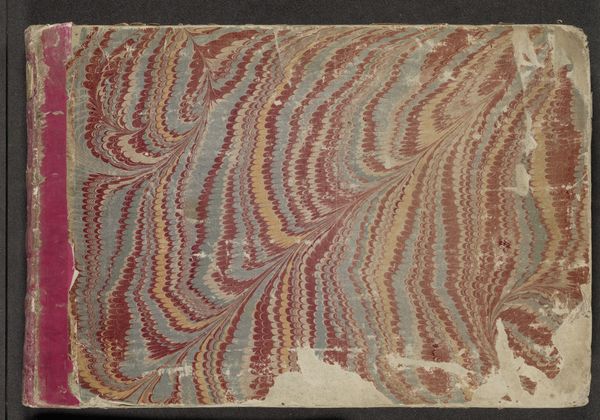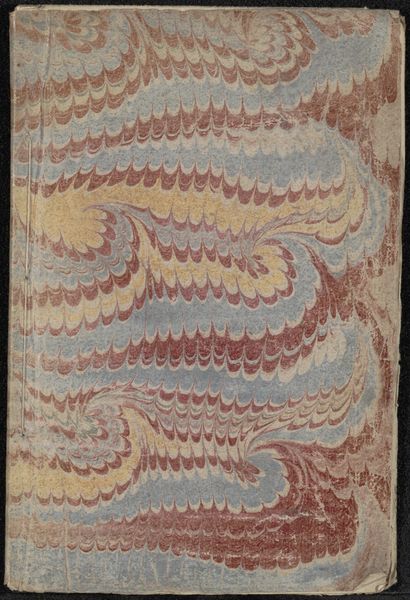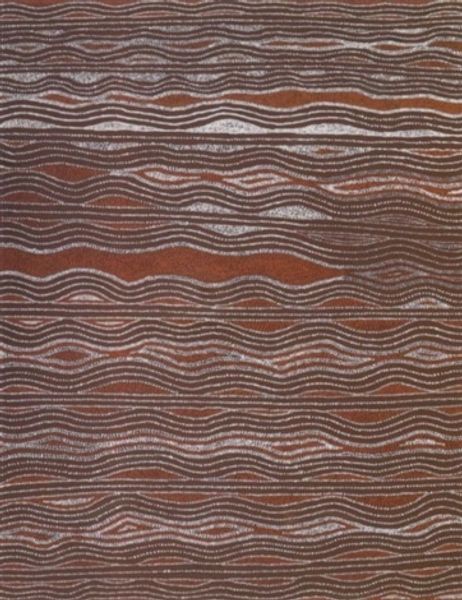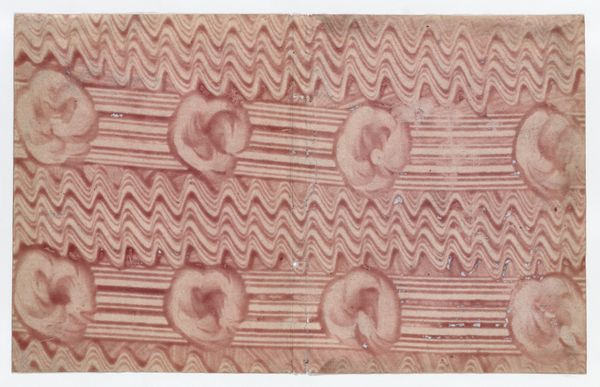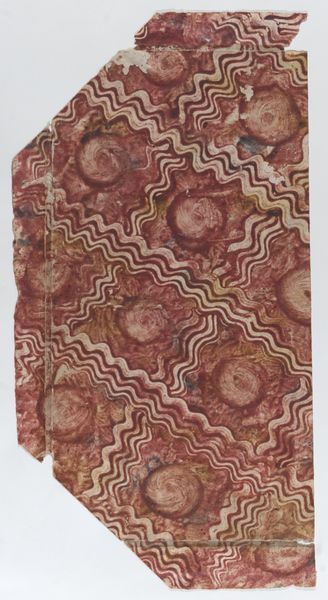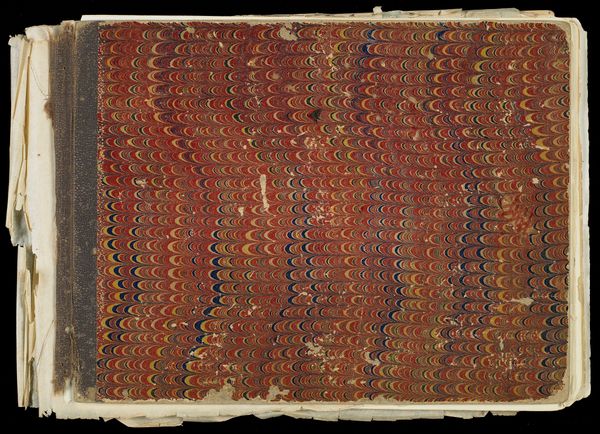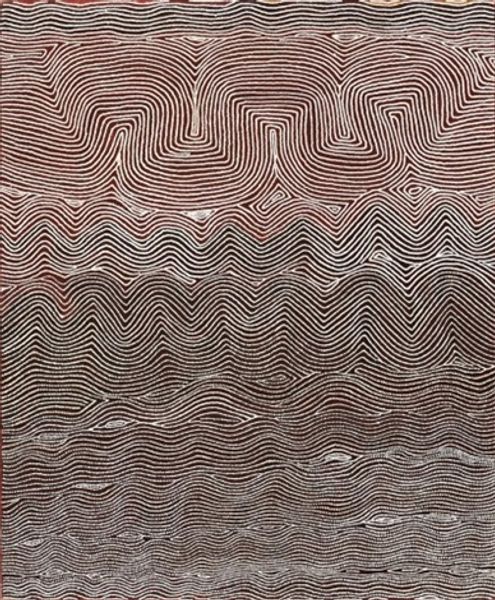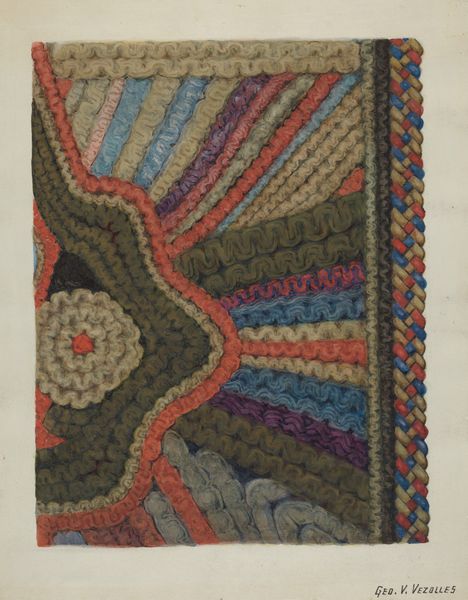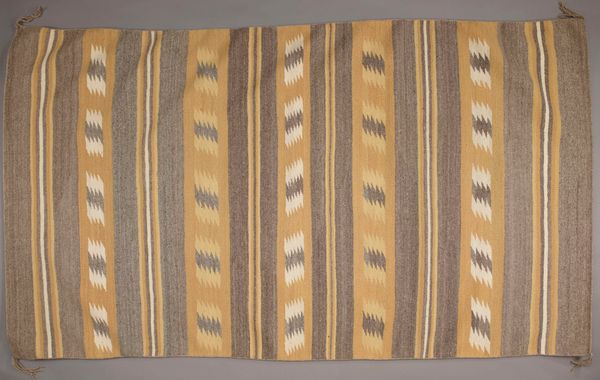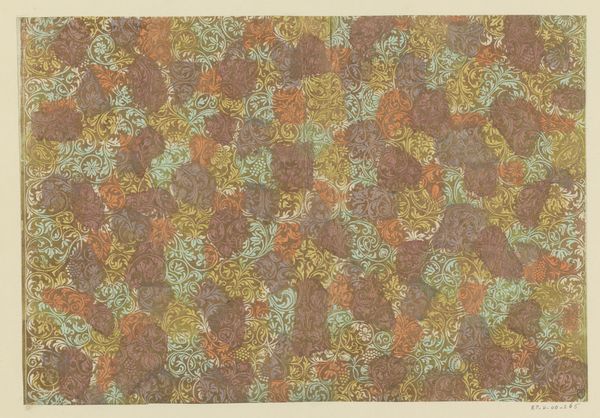
Album met het prentwerk: Les Principales Forteresses & Villes Forte, ca. 1701-1713 1701 - 1714
0:00
0:00
carelallard
Rijksmuseum
print, paper, engraving
#
baroque
# print
#
landscape
#
paper
#
engraving
Dimensions: height 385 mm, width 470 mm, thickness 15 mm
Copyright: Rijks Museum: Open Domain
Editor: We’re looking at "Album met het prentwerk: Les Principales Forteresses & Villes Forte," created between 1701 and 1714. It's attributed to Carel Allard and currently held at the Rijksmuseum. The marbled paper is so mesmerizing. What kind of stories does this surface tell, in your view? Curator: The marbled patterns are more than decorative; they represent a symbolic gateway. The swirling lines can evoke geographical maps, reflecting the content within — views of fortresses and cities. The emotional weight of these places – power, conflict, defense – gets subtly amplified through these visual echoes on the cover itself. What do you notice about the color choices? Editor: I see earth tones mixed with blues. It gives a feeling of both stability and the potential for change. Curator: Precisely! This combination mirrors the dual nature of fortifications: permanence and resistance against the changing tides of conflict and time. It’s a visual embodiment of memory. The landscape’s encoded history is carried forward. Do you see how even the seemingly abstract swirls subtly ground us in a specific time and place? Editor: Absolutely. It is interesting to think about how the abstract design is culturally specific to its time period. The colors would speak to the people. Curator: Yes, patterns act as a visual key to unlocking deeper narratives; patterns hold codes about a culture's worldview, echoing across generations. We began with what seemed simple decoration and landed at place, memory, history, and culture. Editor: I never considered marbling this deeply before. Thank you!
Comments
No comments
Be the first to comment and join the conversation on the ultimate creative platform.
